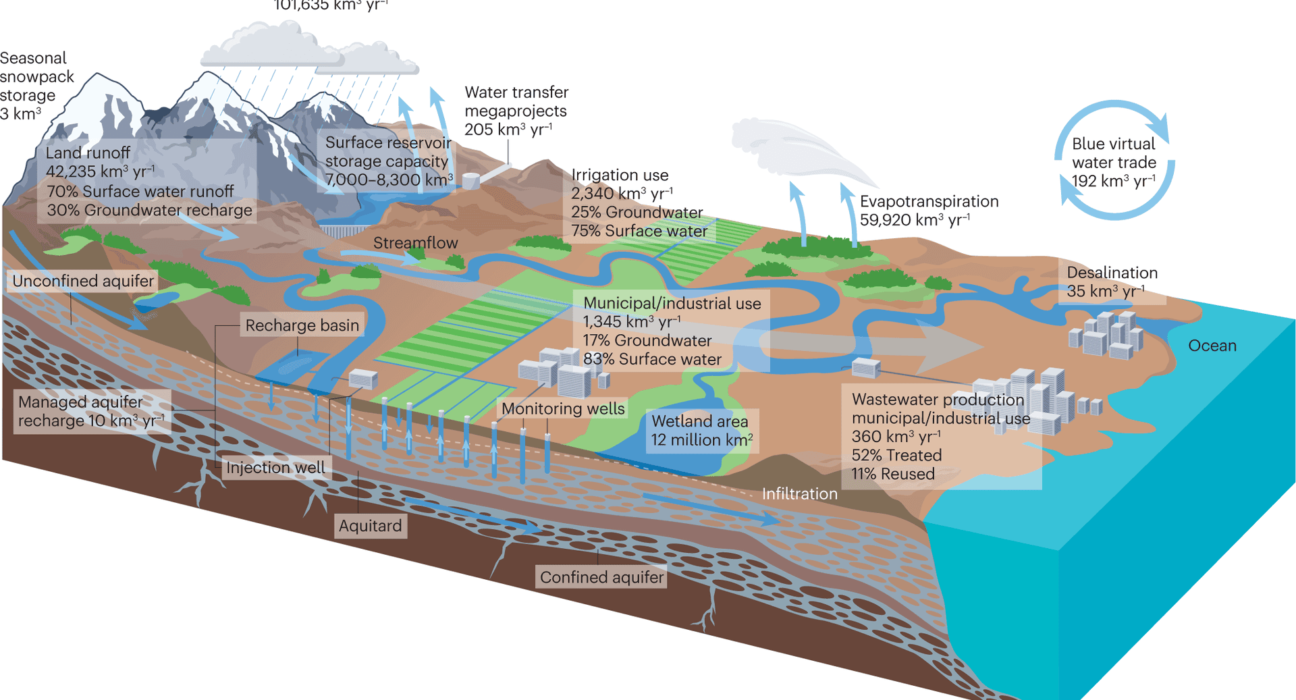Abstract
Water is a critical resource, but ensuring its availability faces challenges from climate extremes and human intervention. In this Review, we evaluate the current and historical evolution of water resources, considering surface water and groundwater as a single, interconnected resource. Total water storage trends have varied across regions over the past century. Satellite data from the Gravity Recovery and Climate Experiment (GRACE) show declining, stable and rising trends in total water storage over the past two decades in various regions globally. Groundwater monitoring provides longer-term context over the past century, showing rising water storage in northwest India, central Pakistan and the northwest United States, and declining water storage in the US High Plains and Central Valley. Climate variability causes some changes in water storage, but human intervention, particularly irrigation, is a major driver. Water-resource resilience can be increased by diversifying management strategies. These approaches include green solutions, such as forest and wetland preservation, and grey solutions, such as increasing supplies (desalination, wastewater reuse), enhancing storage in surface reservoirs and depleted aquifers, and transporting water. A diverse portfolio of these solutions, in tandem with managing groundwater and surface water as a single resource, can address human and ecosystem needs while building a resilient water system.
Key points
- Net trends in total water storage data from the GRACE satellite mission range from −310 km3 to 260 km3 total over a 19-year record in different regions globally, caused by climate and human intervention.
- Groundwater and surface water are strongly linked, with 85% of groundwater withdrawals sourced from surface water capture and reduced evapotranspiration, and the remaining 15% derived from aquifer depletion.
- Climate and human interventions caused loss of ~90,000 km2 of surface water area between 1984 and 2015, while 184,000 km2 of new surface water area developed elsewhere, primarily through filling reservoirs.
- Human intervention affects water resources directly through water use, particularly irrigation, and indirectly through land-use change, such as agricultural expansion and urbanization.
- Strategies for increasing water-resource resilience include preserving and restoring forests and wetlands, and conjunctive surface water and groundwater management.
View Full Article at https://www.nature.com/articles/s43017-022-00378-6

